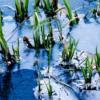How to remove algae from a pond?
Ways to Get Rid of Algae in Ponds.
You’ve built the quintessential pond of dreams. It’s thriving with koi fish frolicking around, happy as a fiddle. There are pond plants burgeoning – as happy as the koi fish! But wait! There’s something more, and it doesn’t look very prepossessing. Yes, it’s algae! UGH!
Natural and artificial ponds are both prone to algae. The blackish-green, grotesque substance glued to the edges of your ethereal pond is algae. We can’t put a finger on a single person who dotes on the idea of this grisly muck ensnaring their otherwise aesthetic ponds. Whether you have a natural pond, a koi pond, or a natural swimming pool, the idea of algae invading our pleasure spots sounds downright grim.
What are algae?
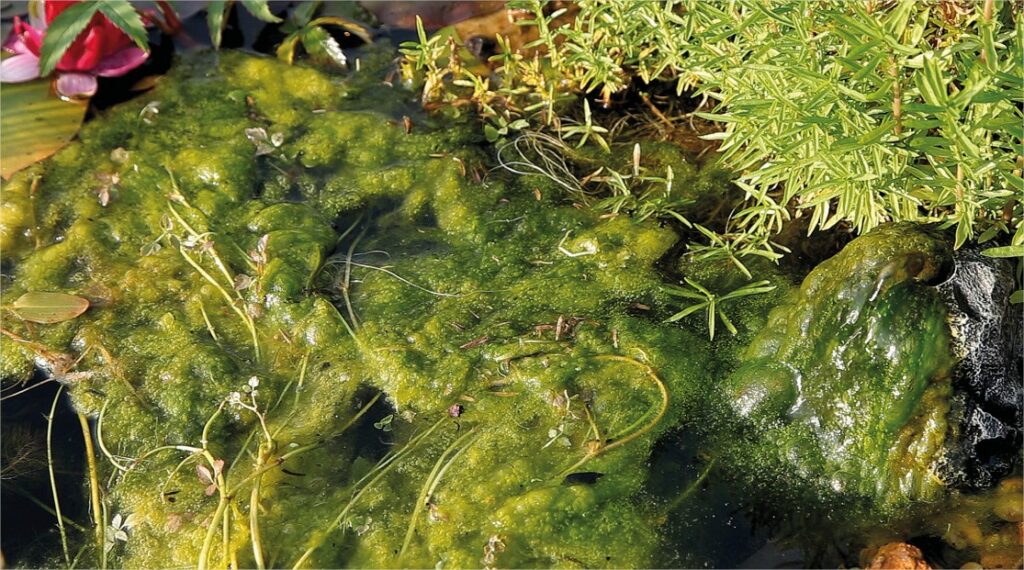
Algae is the plural of alga. Alga is a member of a band of predominantly aquatic photosynthetic organisms that range from microscopic micromonas to gigantic kelps that can reach around 200 feet in length.
Alga is a non-flowering aquatic plant that is a member of a much larger group that includes seaweed and many other single-celled organisms. Algae lacks true stems, leaves, vascular tissue, and root. However, algae do contain chlorophyll, and that’s what fuels them.
Algae in a pond can be divided into three basic types :
1. Planktonic algae
In essence, planktonic pond algae are single-celled, minuscule plants that can bloom in bright green, pea soup-looking, or a blood-red color.
2. Filamentous algae
Filamentous pond algae may also be referred to as moss or pond scum. You’ll normally find filamentous algae at the surface of your pond in the form of greenish mats. Usually, filamentous algae start blooming at the edge of a pond, slowly rising until it reaches the pond’s surface.
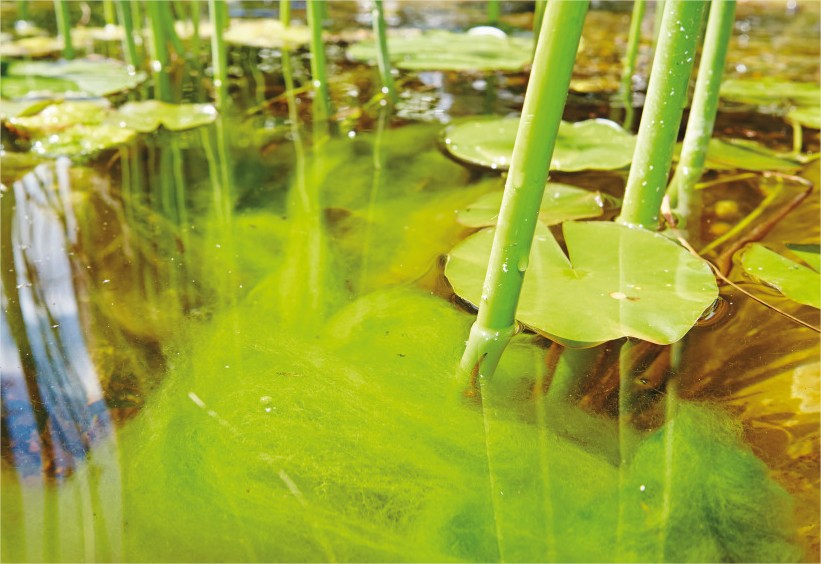
In appearance and texture, filamentous algae may feel slimy, cottony, or coarse – this is due to the cells that have joined together. Normally, filamentous algae grow in a pond region that’s chockfull of calcium and phosphorus.
3. Attached-erect algae
This form of algae does not have simple roots but still are very dense. Attached-erect algae have the appearance of a greater vascular plant, which often confuses people. It has a sandy and bristly surface and is of little use to the general well-being of the pond.
When it comes to ‘pond scum,’ blue-green algae are commonly the guilty party. It was freshly recategorized in the Monera Kingdom, which encompasses bacteria, rather than being classed with other types of algae because blue-green algae share a deeper connection to bacteria than other forms of algae.
There are several varieties of blue-green algae that can be of many diverse colors, such as black, red, brown, or yellow. Blue-green algae are nitrogen-fixing organisms that need only nitrogen and carbon dioxide to survive, both of which are copious in most ponds.
How to get rid of algae in ponds?
A pond can be a gorgeous addition to your home or gardens. However, a great deal of your pond’s beauty is nullified if the pond water is gloomy and green because of a recent algae invasion.
From mechanical solutions to chemical-based ones, there are plenty of ways to get rid of algae in ponds.
Using natural solutions to clean algae
There are tons of natural solutions for you if you want to clean pond algae naturally.
- Plant aquatic plants to absorb algae-promoting nutrients
Planting aquatic plants to combat the growth of algae in your ponds is the oldest trick in the book. As living organisms, algae siphon off nutrients in the water to thrive.
Adding awe-inspiring plants like lily pads, watercress, and cattails to your pond sucks up all of those algae-promoting nutrients. In turn, there will be no nutrients for algae to bank on, which will ultimately lead to all algae vanishing, restoring the clear-water aesthetics of your ponds.
A piece of advice: you need to cover at least 60% of the surface of your ponds for this technique to give the best results.
- Fighting fire with fire – introduce algae-eaters
Besides aquatic plants that devour algae-promoting nutrients, there are even some creatures that you can introduce to your koi pond to swipe it clear of algae. In essence, these aquatic creatures eat algae. Meaning: NO ALGAE!
You can add creatures like tadpoles or aquatic pond snails to eat away algae. Adding tadpoles would be a highly calculated and wise decision on your part because tadpoles also tend to eat mosquitoes and insect larvae at the surface of your pond.
- Feed your pond fish in moderation
To combat the growth of algae in your ponds, you need to avoid overfeeding your fish. This is because when you overfeed your fish, some of the fish’s food is left unconsumed. When this happens, the excess food sinks to the bottom of your fish pond, and the process of rotting jumpstarts. Where there’s rot, there’s a catalyst for algae growth.
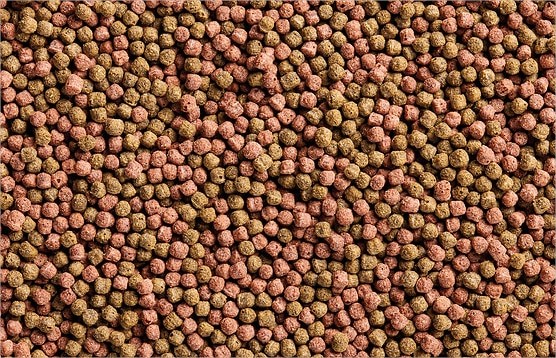
If you don’t know how much to feed your fish, follow the instructions written on the back of the fish food packaging. Besides, you can even try the 5-minute technique. The 5-minute technique states that any amount of food that’s left five minutes after you’ve fed your fish is excess. Once you learn how much food is best for your fish, you’ve successfully mastered knowing your aquatic buddies!
- Using a skimmer/algae net to get rid of algae
You can always go old-school and do things the traditional way – using a simple net to remove algae from the surface of your pond. Using a skimmer or an algae net to remove algae from your pond is pretty straightforward and doesn’t involve any rocket science either – just SWISH the net, and you’re done!
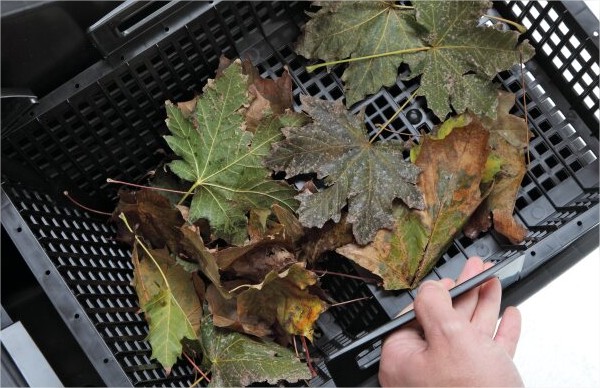
Using a skimmer or algae net to lift algae off the surface of your pond water may be time-consuming, but it bears immediate fruits – you can revel in the rewards of your manual labor! However, using a net to skim algae is not a solution; it’s just a way to get rid of algae.
- Adding barley straw to slow-poison pond algae
Adding barley straw to your algae-infested pond is another ingenious way of screwing over pond algae. As barley straws decompose, it gives off small quantities of hydrogen peroxide. Hydrogen peroxide acts as a poison against algae.
For a start, purchase a small bale of barley straw and throw it in your pond if you see any signs of exasperating algae. As a simple rule of thumb, you need to add around 0.23 kg of barley straw for every 1,000 gallons of water. You can easily find barley straw from your nearest pet shop, pond store, or online.
Using chemical and mechanical solutions to get rid of pond algae
Besides natural solutions, there are a myriad of mechanical and chemical solutions to get rid of algae as well.
- Using a bubble aerator
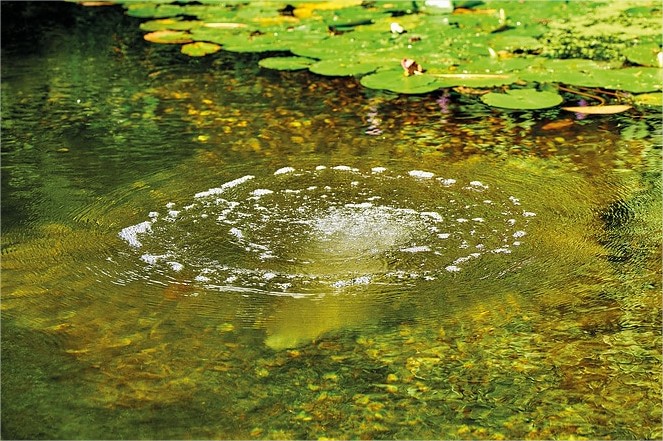
Did you know that one of the primal causes of acne flourishing in water is that the said body of water is still? The lack of water movement creates an atmosphere for algae to blossom in all its glory. Installing a bubble aerator contests this. This is because a fine bubble aerator instills movement in the pond’s water, effectively fighting algae. Installing a robust bubble aerator at the bottom of your pond steadily aerates the water. This keeps the water moving and prevents the growth of stubborn algae.
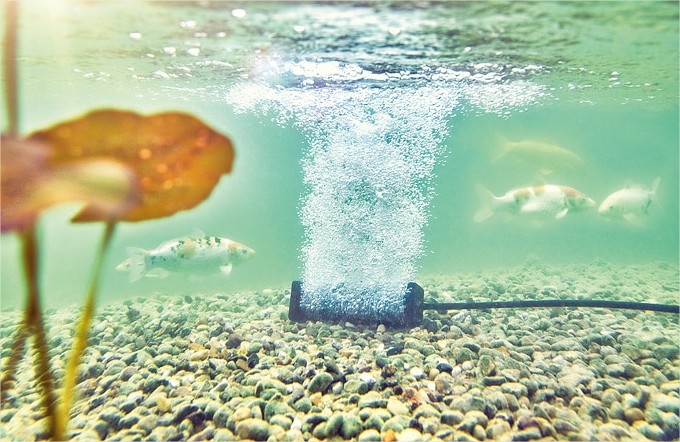
- Keeping your filtration system clean
If you see algae bloom despite having your pond equipped with a sturdy filtration system, you might not be regularly cleaning your pond filtration system. As a simple rule of thumb, it’s best if you clean your pond’s filtration system at least once a month.
Having a pond filter isn’t necessary, but it keeps your pond water clean without you having to manually clean your pond every now and then.
If your pond boasts a huge mechanical filter, you can easily clean it by attaching a hose and backwashing the filter until the water that comes out of the filter is pristine. In contrast, if you have a smaller filter, it’s best if you first remove the filter and clean it with non-chlorinated water to eradicate any traces of algae, gunk, or grime.
- Using the power of UV
Installing an ultraviolet light sterilizer to eliminate algae is another clever trick in the book. Including algae, ultraviolet is just excellent at sterilizing and impairing lots of organic materials.
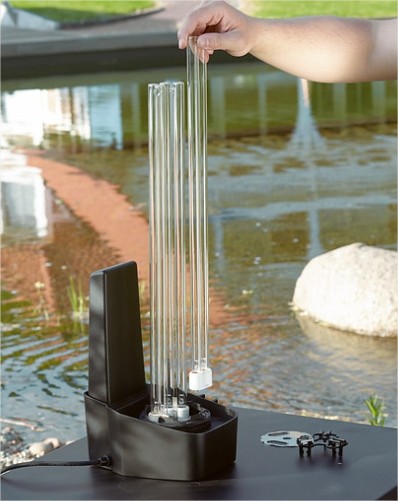
Once you install a UV light sterilizer, within three to five days, your pond will start to clear up, making it free from algae. Filtration systems with UV light sterilizers are usually costlier than normal filters, but they have the added benefit of being immensely prolific.
In addition to being an algae-killer, UV light sterilizers also do wonders in dismembering other harmful bacteria. However, they may even kill the good bacteria, so you need to be extremely cautious of that!
- Harnessing the strength of algaecides & herbicides
Algaecides are another marvelous way of getting rid of algae in your ponds. Algaecides and herbicides (with copper) bear results within 3 to 10 days of the first treatment. Algaecides are easily available in the market, and to kickstart your first treatment; you only need to spread the chemicals evenly on your water body.
In essence, herbicides and algaecide are constituents of material that are innovatively engineering to kill algae seamlessly. This makes this method potentially more harmful than other algae-killing methods mentioned in this article.
Therefore, you must always use algaecides as a last resort ONLY. In the bargain, you must also follow the instructions highlighted on the packaging to make sure you’re doing things the right way.
Lastly, many local regulations don’t allow the use of algaecide in water bodies. This means that before adding algaecide to your natural pond, make sure you’re complying with every local regulation.
How can I prevent algae from forming on my pond?
You can proactively control algae by preventing it from forming in the first place. Here’s what you can do to prevent an algae bloom.
- Limiting exposure to sunlight
As we all know, algae require sunlight to develop. By building a pond in a shady area, you limit the chances of an algal bloom. For starters, building a pond next to a large wall would be a wise decision.
To boot, you shouldn’t bank on large trees to restrict your pond’s exposure to sunlight. The reason is trees shed leaves, and later, these leaves sink to the bottom of the pond, multiplying the chances of an algae infestation. In contrast, you can consider sails and shade mats – these are also easily available in the market.
- Bordering your pond
Another thing you can do is add a border circling your pond to stay clear from new water. Water that flows directly from your lawn into your pond may be brimful of nutrients that algae can feed on. Constructing a small border of at least 1-inch fights this. A durable border also wards off harmful fertilizers, pesticides, and insecticides from seeping into your pond.
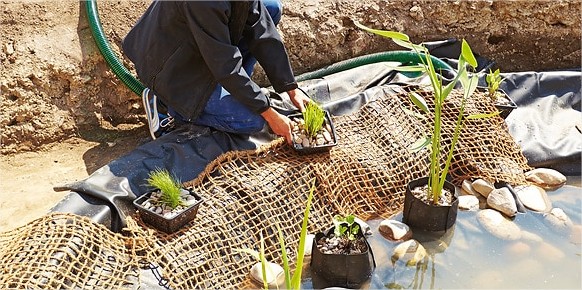
- Dying water
Dying your pond water in a darker shade helps restrict sunlight from reaching the bottom of your pond. Since sunlight doesn’t reach the bottom, this technique productively prevents algae formation. People usually like to use blue dyes to paint their pond water since the color is dark, and the originality of the pond isn’t compromised in the process either.
The amount of dye you need to add to your pond is tremendously dependent on the amount of water in your pond. It would be best if you followed the manufacturer’s instructions to avoid the blatant risk of over-dying.
Ending thoughts
Algae can be a pain in the a**; everyone knows that. The blue-green sludge that vindictively glares at you from the corner of your pond is downright disconcerting. In times like this, it’s best you gear yourself up with an exceptional and efficacious strategy. Or better yet, try out an algae-prevention tactic to prevent algae from blooming in the first place!
We wish you good luck – kill that algae!






